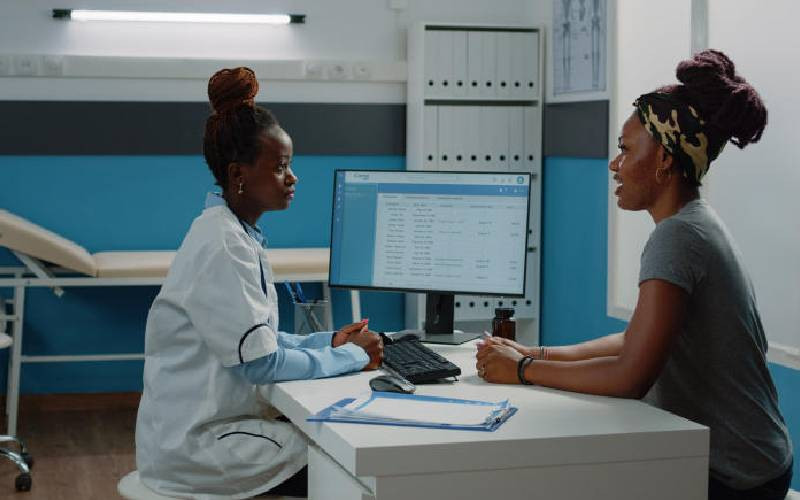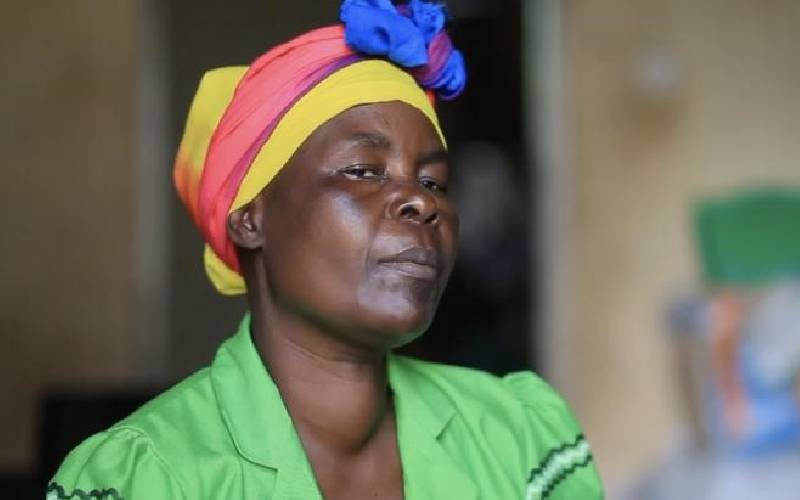For a long time, cancer was considered a disease that afflicted people in the West. Not any more. Kenya is reporting more and more cases of cancer and the strain on patients, families, and health facilities is beginning to show.
The steady rise in the number of new cancer diagnoses is a trend that began in the late 1980s, but the increase in hospital capacity has not been proportional due to poor planning and under-funding of the health sector.
This lack of foresight has led to a situation where the burden of cancer patients far outweighs the facilities for the treatment of the disease, and the requisite health professionals.
The situation is dire. Picture this: The Kenyatta National Hospital is the only public health facility that offers chemotherapy to patients at the Cancer Treatment Centre. Only one of two machines at KNH is operational and it is being overstretched beyond its capacity. Because of the overwhelming number of cases that need chemotherapy, the machine is handling 150 patients a day, instead of the stipulated 40. The hospital’s waiting list is at 500 and growing. This means that if a patient were referred for chemotherapy today, the earliest they would get their first session would be July.
Quite apart from the inadequate equipment, the number of health personnel is way below the required figure. The country has only 20 clinical oncologists, most of who are based in Nairobi. The situation is aggravated by the fact there is no local university offering post-graduate training in this field. The country has only five specialised radiographers.
Although the charges for chemotherapy at KNH are highly subsidised, patients still have to fork out some Sh24,000 to Sh30,000 for chemotherapy drugs for every course. This is way out of reach for ordinary Kenyans.
This paints a grim picture of cancer treatment in our country.
It is commendable that a second machine for chemotherapy will be installed at KNH next month at the cost of Sh110 million. However, there is a lot that can still be done to ease the pain and agony of cancer patients.
To adequately deal with the huge backlog of patients at KNH, the Government needs to set aside funds to buy at least five machines.
There is also need to train more clinical oncologists and radiologists with the aim of establishing cancer treatment centres in districts and provincial hospitals.
Equipping regional hospitals is the sure way of easing pressure on KNH so that it can revert to its original vision of being a referral medical facility. The health administrators should seriously look at the possibility of subsidising the cost of chemotherapy drugs to ease the burden of families with such patients.
It is unfortunate that most cancer cases being handled at KNH were detected late, thereby reducing the possibility of successful management of the disease.
The Ministry of Health must seek to create awareness among medical practitioners on how to detect the disease early and impart in them the necessary skills. Early detection capacities should be increased in hospitals and dispensaries. This is paramount because when any cancer is detected early it can be successfully treated.
It is worth noting, however, that the above measure would only help ease the pain of cancer patients.
We should embrace the old adage that prevention is better than cure. Medical science has given us knowledge of cancer and what can be done to reduce the chances of getting it.
Stay informed. Subscribe to our newsletter
Health officials should work out an integrated strategy that would address prevention, diagnosis and treatment of cancer.
Emphasis must be laid on prevention by creating awareness on the dos and don’ts of this disease.
A campaign on prevention that would cover such issues like reducing the consumption of tobacco and alcohol, avoiding obesity, physical exercise, and vaccination against HPV and hepatitis B would reduce chances of new infections.
 The Standard Group Plc is a
multi-media organization with investments in media platforms spanning newspaper
print operations, television, radio broadcasting, digital and online services. The
Standard Group is recognized as a leading multi-media house in Kenya with a key
influence in matters of national and international interest.
The Standard Group Plc is a
multi-media organization with investments in media platforms spanning newspaper
print operations, television, radio broadcasting, digital and online services. The
Standard Group is recognized as a leading multi-media house in Kenya with a key
influence in matters of national and international interest.
 The Standard Group Plc is a
multi-media organization with investments in media platforms spanning newspaper
print operations, television, radio broadcasting, digital and online services. The
Standard Group is recognized as a leading multi-media house in Kenya with a key
influence in matters of national and international interest.
The Standard Group Plc is a
multi-media organization with investments in media platforms spanning newspaper
print operations, television, radio broadcasting, digital and online services. The
Standard Group is recognized as a leading multi-media house in Kenya with a key
influence in matters of national and international interest.








